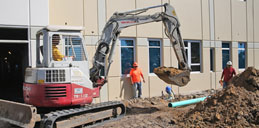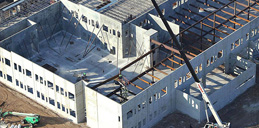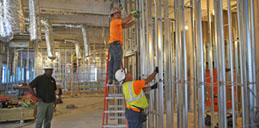6 New Materials That Are Changing Commercial Construction
The construction industry is always looking for innovative methods that will enable them to build faster, safer and more sustainable buildings. And in addition to advancements in building technology, these six new materials will have a positive impact on future commercial construction projects.
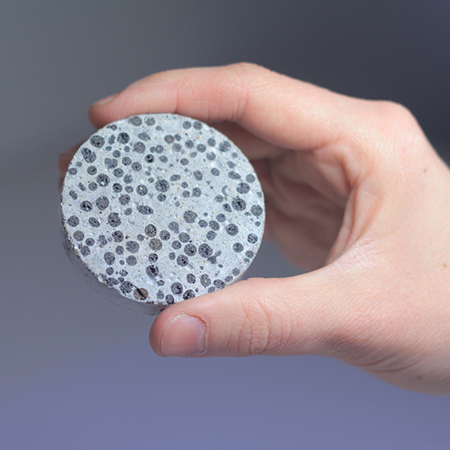 Self-Healing Concrete
Self-Healing Concrete
Concrete is known for its strength and durability. But as concrete ages and due to environmental conditions, cracks can form in the surface. And making concrete repairs to fix these cracks can be time consuming and expensive. So, what if there were a type of concrete that could heal itself, much like the human body does with small cuts? Researchers at the Ghent University in Ghent, Belgium, discovered that by injecting certain organic material into the concrete mix like super-absorbent polymers, micro-organisms and encapsulated polymers, the concrete could “heal” itself when it came into contact with water and oxygen. Also, researchers at University of Binghamton discovered that when a specific type of fungus spore was injected into concrete, water and oxygen would activate and release calcium carbonate, a key ingredient in concrete, that will “automatically” fill in cracks.
Translucent Wood
Developed by the KTH Royal Institute of Technology in Stockholm, Sweden, translucent wood could change the way commercial and residential structures are built. Researchers discovered that the lignin that gives wood its color can be removed through a relatively quick and inexpensive chemical process. And when the lignin is removed, the wood becomes translucent. Translucent wood is as thin as a piece of paper, yet stronger than glass and it doesn’t shatter. This means that buildings in the future may contain windows made entirely of wood instead of glass.
Tall Mass Timber
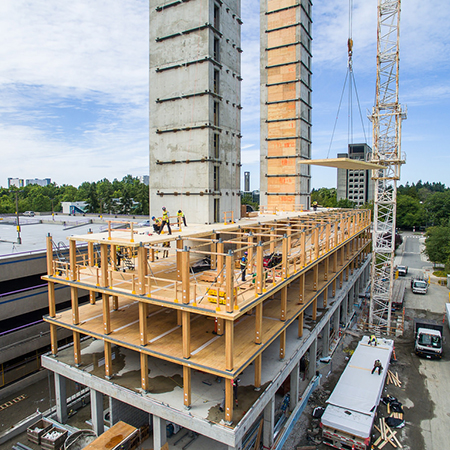 Tall mass timber is an emerging material that could change the face of building construction. Its gaining traction as a suitable replacement for concrete and steel buildings. Constructing with tall mass timber covered with gypsum board can reduce construction delivery times as much as 25% and deliver a building that is as strong and fire resistant as concrete and steel. A seven-story office building in Minneapolis was constructed with tall mass timber. And a prominent architectural firm is proposing to build the tallest wood building, an 80-story residential tower in Chicago.
Tall mass timber is an emerging material that could change the face of building construction. Its gaining traction as a suitable replacement for concrete and steel buildings. Constructing with tall mass timber covered with gypsum board can reduce construction delivery times as much as 25% and deliver a building that is as strong and fire resistant as concrete and steel. A seven-story office building in Minneapolis was constructed with tall mass timber. And a prominent architectural firm is proposing to build the tallest wood building, an 80-story residential tower in Chicago.
Hydroceramics
An emerging line of “smart” building materials using hydrogels to create hydroceramic materials may keep buildings cooler in the future. A layer of hydrogels containing a solution of insoluble polymers are sandwiched between a layer of clay ceramic and fabric. When the humidity reaches a certain level and excess moisture is created, the hydrogels are activated in a thermodynamic process. As the hydrogels absorb the water through evaporation, it creates a passive cooling effect that reduces the temperature inside a building by up to 10.8°F.
CABKOMA Strand Rod
While this new material may look like a futuristic work of art, it just may be one of the most important structural safety developments of the 21st century. Developed by Komatsu Seiten Fabric Laboratory in earthquake-prone Japan, the CABKOMA strand rod uses lightweight thermoplastic carbon fibers with tensile strength to provide a building with seismic reinforcement. These strand rods have the potential to minimize the devastating effects to buildings around the world during an earthquake.
Synthetic Spider Silk
Who would have thought that a new material that is 98% water can be stronger than steel? But that’s exactly what researchers at the University of Cambridge have discovered about spider silk. And researchers in the School of Engineering & Applied Science at Washington University in St. Louis have been able to engineer bacteria to create a synthetic spider silk that is comparable to natural spider silk. While this new material is not yet ready for mass production, synthetic spider silk could be used for a variety of building construction applications in the future.



